Our Music curriculum is designed to inspire creativity, foster a love for music, and develop students’ skills in performance, composition, and critical listening. The timeline below outlines a carefully sequenced journey through a diverse range of musical styles, techniques, and concepts. Through this curriculum, students will build their confidence, deepen their understanding of music theory, and develop the ability to express themselves through music, both individually and collaboratively.
Year 7
Rhythm and pulse

Introduction to KS3 music through developing knowledge and understanding of pulse in music and the association with repeated patterns of rhythms.
Pupils learn the difference between different note values and how to read and play them.
Pupils create rhythmic patterns of their own using a mixture of body percussion sounds.
Elements of music

Pupils learn about the elements of music: Tempo, dynamics, rhythm, instrumentation.
Through the topic, pupils will do a mixture of appraisal and performance activities to help with their understanding of the elements of music.
As the unit progresses, students will delve into the works of Beethoven, specifically focusing on his iconic "Symphony No. 9." They will learn to play the famous "Ode to Joy" theme on the keyboard, utilizing different settings on the keyboard to manipulate some of the elements of music.
Instruments of the orchestra
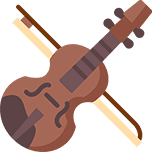
Students will explore the diverse world of orchestral instruments and their families. The unit begins with hands-on lessons where students will investigate various instruments available in the school, fostering an appreciation for their unique sounds and roles within an orchestra. Pupils will then learn ‘The Swan’ from ‘The carnival of the animals’ by Camile Saint-Saens. This piece is intended for the cello. By changing the voice setting on the keyboard, pupils will learn how the choice of instrument effects the sound of a melody. This unit not only enhances students' practical skills but also deepens their understanding of orchestral music and its historical context.
Read MoreFolk Music

In this Year 7 unit on folk music, students will explore the rich tapestry of folk traditions from around the world, focusing on the cultural significance and historical context of these musical forms. The unit will highlight the importance of folk music as a means of storytelling, community bonding, and cultural expression. Students will engage with specific pieces, including the sea shanty "The Wellerman," the traditional English folk song "Scarborough Fair," and "The Derby Ram," a song with roots in Derbyshire. Through singing, listening, and discussion, students will develop an appreciation for the diverse styles and themes found in folk music, while also connecting these songs to broader social and historical narratives.
Read MoreForm and structure

Students will explore the fundamental compositional forms used in classical music, focusing on 'Question and Answer Form', 'Binary Form', and 'Ternary Form'. Through engaging keyboard activities, students will analyse and perform pieces that exemplify these forms, fostering both their practical and theoretical understanding of music. By the end of the unit, students will not only be able to identify and describe these forms but also apply their knowledge in their own compositions, enhancing their creativity and musical expression.
Read MoreYear 8
Variations

Students will explore the concept of musical variation through the lens of Pachelbel's Canon in D. Students will engage in hands-on keyboard activities, where they will learn to create their own variations on the established theme. Through this process, they will develop their improvisation skills, enhance their understanding of musical structure, and foster their creativity. The unit will culminate in a performance where students showcase their unique variations.
Read MoreAll about the bass

During this unit, pupils will learn about bass clef and bass clef notation.
Pupils will learn about the fundamental role of bass notes in music. Focussing on their role in creating harmony, texture and rhythm.
Pupils will learn about the bass clef, bass clef notation and associated bass instruments from a variety of genres.
By the end of the unit pupils will have an appreciation of the importance of a bass line in music and how to play one alongside a main melody.
Hooks and riffs

Students will explore the essential elements of pop music through the lens of hooks and riffs, focusing on the iconic song "Sweet Dreams" by the Eurythmics. Students will develop their musical skills by identifying and playing hooks and riffs on keyboards and ukuleles, as well as through singing. By analysing the structure and impact of these musical elements, learners will gain a deeper understanding of how hooks and riffs contribute to the overall appeal of pop songs.
Read MoreMusic technology

Students will explore the exciting world of music technology, focusing on composition using Musescore notation software. Building on their foundational knowledge from Year 7, where they learned about binary and ternary forms, students will deepen their understanding of musical structures by creating compositions in Rondo form. Students will engage in hands-on activities that foster collaboration and enhance their musical skills, preparing them for further studies in music and technology.
Read MoreYear 9
What makes a good song

Students will explore the fundamental elements of pop song structure through the engaging example of "Shotgun" by George Ezra. Students will learn to identify and analyse different sections of a pop song, such as verses, choruses, and bridges, enhancing their understanding of musical form. Through collaborative group work, pupils will select a pop song of their choice and create a short arrangement, utilizing instruments like the keyboard, ukulele, or guitar. This hands-on approach fosters creativity and teamwork.
Read MoreSoundtracks

Students will explore the fascinating world of film music, focusing on its origins and significance in enhancing cinematic experiences. Through the study of iconic themes from films such as "Halloween" and "Psycho," pupils will gain an understanding of how music contributes to storytelling and emotional impact in film. Building on their previous learning from the Year 8 unit "Variations," students will have the opportunity to arrange and perform their chosen film music themes using keyboards, ukuleles, or through vocal performance. By the end of the unit, students will not only have developed their practical skills but also their appreciation for the role of music in film.
Read MoreMusic technology

In Year 9, students will build upon their foundational skills in music composition developed in Year 8, particularly with Musescore software. This year, the focus will shift towards creating more complex compositions that incorporate a variety of instruments and explore different musical genres. By revisiting and expanding on their previous knowledge, students will enhance their understanding of music technology and composition techniques, preparing them for more advanced musical studies.
Read MoreYear 10
Elements of music retrieval.

In this topic, we will explore the fundamental components that make up music, building on the knowledge you've gained in Key Stage 3. Understanding the elements of music is essential for analysing and creating music effectively. We will revisit key concepts and expand your knowledge to deepen your appreciation and skills in music theory.
Read MoreThe concerto through time
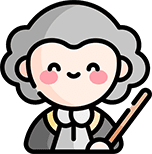
This unit explores the development of the concerto from the Baroque period to the Romantic era, focusing on the structure, instrumentation, and role of the soloist and orchestra. Students will study key works by composers such as Vivaldi, Mozart, and Beethoven, examining how the concerto form evolved in terms of orchestration, dynamics, and expression. Through listening, analysis, and performance tasks, students will develop an understanding of how different periods of music history shaped the concerto and its performance practice.
Read MoreComposition
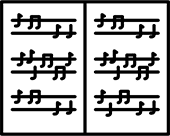
In this unit, students will focus on composing original pieces of music, responding to a self-written brief as part of their coursework. The unit emphasizes creativity, developing compositional techniques, and applying theoretical knowledge. Students will explore different starting points for compositions, such as melody, harmony, rhythm, or texture, and will be encouraged to develop their own musical ideas. The unit also covers the use of music technology and score-writing, with students producing a final score and recording. Throughout the process, students will be guided to refine and develop their compositions through feedback and self-assessment.
Read MoreSolo performance

In this unit, students will focus on preparing and performing a solo piece as part of their GCSE coursework. This unit encourages students to refine their technical and interpretative skills on their chosen instrument or voice. Students will select a piece that is suitable for their ability level and aligns with the exam board's guidelines. The unit emphasizes performance techniques such as phrasing, dynamics, articulation, and expression, as well as the importance of practice strategies and stage presence. Throughout the unit, students will receive individual feedback and learn how to evaluate their own performances.
Read MoreThe conventions of pop

This unit focuses on the evolution and key features of pop music from the 1950s to the present day, covering genres such as rock 'n' roll, pop ballads, and solo artists from the 1970s onwards. Students will explore the stylistic characteristics of these genres, including typical song structures, instrumentation, and production techniques. The unit includes listening and analysis tasks, where students will dissect key pop songs and identify elements like melody, harmony, rhythm, and lyrics. They will also consider the cultural and social impact of pop music and how technology has influenced its development.
Read MoreFilm music

In this unit, students will explore the role of music in film, learning how it enhances the visual experience and supports narrative storytelling. They will analyse how composers use melody, harmony, rhythm, instrumentation, and dynamics to convey mood, character, and action. Students will study iconic film scores, considering how leitmotifs, themes, and underscoring are used to create emotional impact. The unit also explores the historical development of film music, from early silent films to modern-day blockbusters, and the use of technology in film composition.
Read MoreYear 11
Composition
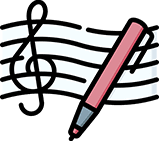
Compose a piece that fulfils the specific criteria of the exam board's set brief.
Develop their compositional ideas in a structured and creative manner.
Use music technology or notation software to present their work professionally.
Ensemble performance

Experience with solo performance, developing confidence and technical skills on their chosen instrument or voice.
Understanding of basic musical elements such as rhythm, melody, and dynamics.
Knowledge of how to follow a conductor or musical director in a group setting.
Rhythms of the world

Understanding of basic rhythmic elements such as note values, rests, and time signatures.
Familiarity with rhythmic notation and performance, developed through earlier performance work.
Experience with listening and analysing a variety of musical genres and identifying rhythmic features.
Exam revision

Detailed study of each area of study, including The Concerto Through Time, Film Music, Pop Conventions, and Rhythms of the World.
Familiarity with score analysis and identification of key musical elements like texture, melody, and harmony.
Experience with listening exercises and practice questions from previous assessments.
